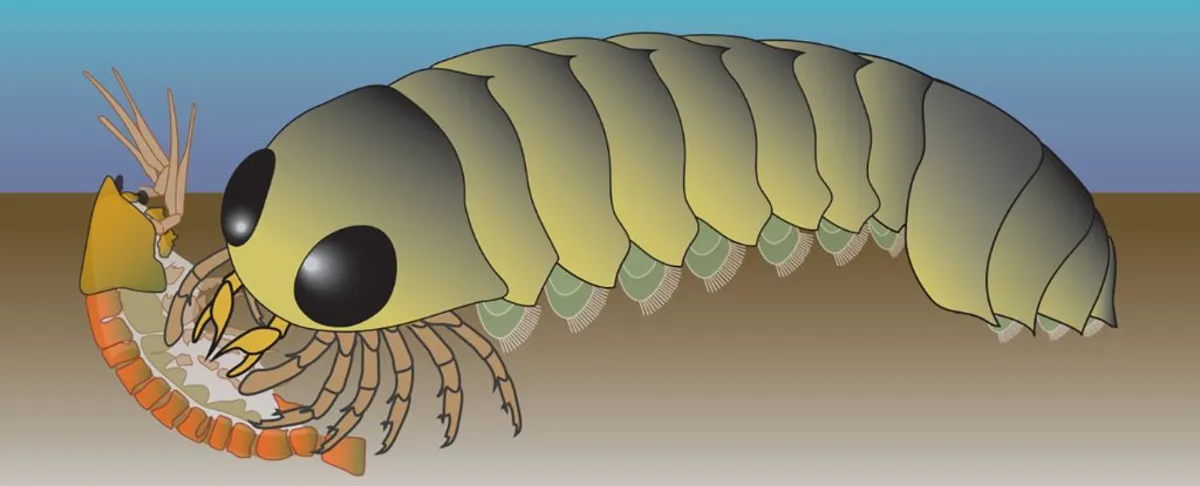
The fascinating evolution of spiders may have begun in the depths of our oceans, long before their ancestors ventured onto land. A groundbreaking study conducted by researchers from the University of Arizona, Lycoming College, and King's College London has shed light on this intriguing possibility. By examining a 500-million-year-old fossil, scientists uncovered striking similarities between the brains of ancient marine arthropods and those of modern-day arachnids.
This significant discovery challenges the prevailing notion of the evolutionary origins of spiders and their relatives. Currently, spiders, scorpions, mites, and ticks are primarily terrestrial creatures, leading many to believe they evolved from a common land-dwelling ancestor. However, the quest for the origins of this ancestor remains a complex puzzle. While arachnids share a relationship with other chelicerates found in oceanic environments, such as sea spiders and horseshoe crabs, the fossil record is notoriously incomplete.
University of Arizona neuroscientist Nicholas Strausfeld explains the ongoing debate surrounding the appearance of arachnids. Researchers are still investigating whether their ancestors were marine or semi-aquatic, akin to horseshoe crabs. The shift from aquatic to terrestrial life is a monumental transition for any creature, regardless of its number of legs.
The oldest accepted evidence of an arachnid comes from a 430-million-year-old scorpion that thrived on land. However, new findings suggest that arachnids may have begun diverging from other chelicerates much earlier. The fossil in question, known as Mollisonia symmetrica, may not appear particularly "spidery," resembling a pillbug adorned with numerous tiny legs. Previously categorized as a potential ancestor of horseshoe crabs, this fossil has revealed unexpected insights through light microscopy analysis of its central nervous system.
Researchers discovered that the nervous system of Mollisonia does not resemble that of horseshoe crabs or even other crustaceans and insects. Instead, it exhibits a unique pattern of neural centers that mirrors the structure found in modern arachnids. According to Strausfeld, the arachnid brain is unlike any other brain on Earth, showcasing evolutionary adaptations that set it apart.
The distinct nervous system of Mollisonia appears to innervate several legs and two pincer-like mouthparts, which are analogous to the fangs of contemporary spiders. This finding signifies a critical evolutionary leap that seems exclusive to arachnids. Frank Hirth, an evolutionary neuroscientist from King's College London, notes that the identification of brain domains in Mollisonia that correspond with living arachnids suggests these structures were likely inherited rather than coincidental.
If this hypothesis holds true, Mollisonia could represent a foundational species in the arachnid lineage, positioning it as a close relative to horseshoe crabs and sea spiders. While still speculative, the unique brain structure observed in this ancient lineage may have played a vital role in enabling its descendants to thrive on land. Neural shortcuts to the legs and pincers may have facilitated complex movements such as walking or web-weaving.
It is plausible that Mollisonia-like arachnids adapted to terrestrial environments, preying on early insects and millipedes. Strausfeld theorizes that these early arachnids may have spurred the evolution of wings in insects, leading to the advent of flight. Consequently, the emergence of airborne prey could have driven arachnids to develop intricate webs.
From the ocean floor to the treetops, the evolutionary journey of arachnids showcases their remarkable adaptability and resilience in changing environments. This new research not only enriches our understanding of spider evolution but also highlights the interconnectedness of life forms across different habitats.